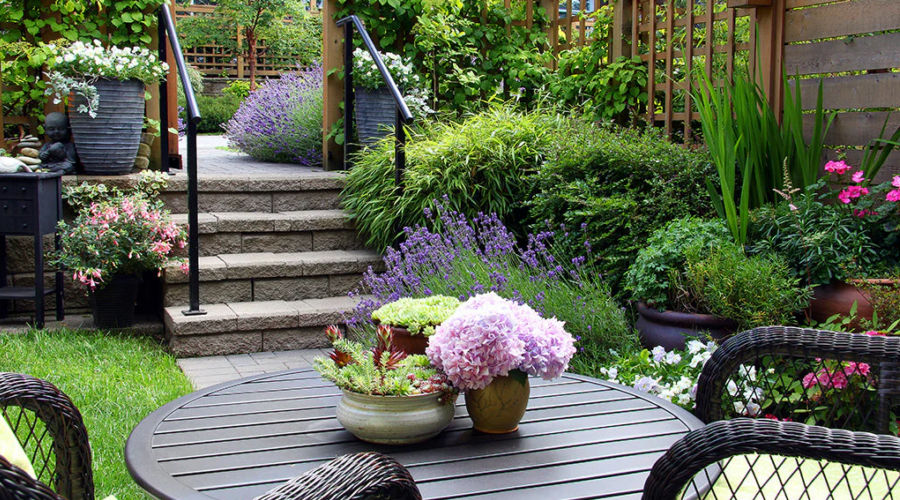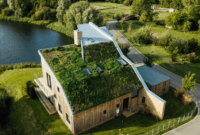[start_random_journey]
Creating a beautiful backyard doesn’t have to mean spending hours every week maintaining it. With smart planning and a few practical easy gardening strategies, you can enjoy a lush, relaxing outdoor space that practically takes care of itself. A low-maintenance garden is not only time-saving but also promotes sustainable landscaping, reducing water waste and reliance on harmful chemicals.
Whether you’re a busy homeowner or simply prefer enjoying your garden rather than constantly working in it, this guide will walk you through easy, practical steps to build a thriving, low-effort landscape that stays gorgeous year-round.
1. Start with Smart Garden Planning

Every great low-maintenance garden begins with thoughtful design. Before buying plants or tools, take time to plan your layout. Assess how much sunlight and shade your space receives throughout the day, and identify which areas retain more water after rainfall. This will help you choose plants that naturally thrive in those conditions.
When designing your garden, think in zones. For example, group plants that require similar sunlight and watering needs together. This reduces maintenance since you won’t have to adjust your care routine for each section. Use online tools like Garden Planner by Almanac to visualize your design easily.
Internal link suggestion: For more advanced design ideas, check out Simple Gardening Tips to Create Your Dream Backyard Oasis.
Pro Tip: Opt for curved pathways and natural shapes instead of rigid layouts. They create a relaxed, organic flow that complements low-maintenance designs.
2. Choose Native and Drought-Resistant Plants
When it comes to easy gardening, choosing the right plants makes all the difference. Native species are naturally adapted to your region’s soil, climate, and rainfall patterns, meaning they need less water, fertilizer, and attention to thrive.
In hot or dry regions, consider drought-tolerant plants such as lavender, succulents, ornamental grasses, or yarrow. For cooler climates, hostas, ferns, and hydrangeas are hardy choices that can handle various conditions.
These types of plants are perfect for sustainable landscaping because they require fewer resources while supporting local wildlife like bees and butterflies. Explore plant lists from the EPA’s Native Plant Database or National Wildlife Federation to find the best fits for your region.
Pro Tip: Mix evergreen shrubs with seasonal perennials for year-round color and minimal upkeep.
3. Simplify with Mulching and Ground Covers

If you want to save time while improving soil health, mulching is a must for any low-maintenance garden. A 2-3 inch layer of organic mulch, such as wood chips, bark, or straw, helps retain moisture, suppress weeds, and regulate soil temperature.
Ground covers like creeping thyme, clover, or sedum are another easy gardening hack. They reduce the need for frequent mowing and add greenery without demanding much attention. For sloped areas, they help prevent soil erosion as well.
Check out Garden Design’s Ground Cover Ideas for inspiration on low-care plants that still look stunning year-round.
Pro Tip: Replenish mulch once or twice a year to maintain its benefits and fresh look.
4. Go for Automated Irrigation Systems
Watering is one of the most time-consuming garden tasks, but with modern tools, it doesn’t have to be. Installing an automated irrigation system ensures your plants get consistent moisture without you lifting a finger. For sustainable landscaping, smart irrigation systems like Orbit B-hyve or Rain Bird Smart Controllers are great options. They adjust watering schedules based on weather forecasts and soil moisture levels.
Pair drip irrigation with timers to deliver water directly to plant roots, minimizing evaporation and waste. You’ll not only save time but also reduce your water bill significantly.
Pro Tip: Water early in the morning or late in the evening to avoid evaporation and give plants time to absorb moisture efficiently.
5. Design Functional, Low-Effort Garden Beds

Raised garden beds are perfect for a low-maintenance garden. They provide excellent drainage, reduce weed growth, and allow for easy access without bending too much. Fill them with nutrient-rich soil, and you’ll have a self-contained ecosystem that’s easy to manage.
For an aesthetic touch, use stone or wood borders that blend naturally with your outdoor design. You can also add built-in drip irrigation or self-watering containers for even less upkeep.
Visit Gardener’s Supply Company for ready-to-use raised bed kits and accessories that simplify garden maintenance.
Pro Tip: Keep your beds no wider than four feet so you can reach the center easily without stepping on the soil.
6. Embrace Hardscaping for Structure and Style
Hardscaping — such as stone paths, patios, or gravel areas — can dramatically cut down your maintenance time while enhancing visual appeal. By replacing high-maintenance grass or flower beds with functional features, you create a more durable and lasting landscape.
Use materials like gravel, pavers, or reclaimed wood for a rustic look that complements sustainable landscaping. These features also improve drainage and reduce soil compaction.
For ideas, explore Houzz Outdoor Design Gallery or Architectural Digest’s Hardscaping Tips.
Pro Tip: Balance greenery with hardscaping — too much stone can make your garden feel harsh instead of relaxing.
7. Pick Sustainable Lawn Alternatives

Traditional lawns require frequent mowing, watering, and fertilizing. To save time and resources, replace them with eco-friendly alternatives. Options like artificial turf, native grasses, or ground covers (such as creeping thyme or clover) reduce upkeep and still look beautiful.
For sustainable landscaping, consider meadows or wildflower patches instead of manicured lawns. They attract pollinators, conserve water, and offer vibrant color through the seasons. For inspiration, check out National Geographic’s Lawn Alternatives Guide.
Pro Tip: If you keep a small patch of grass, mow high to shade the soil and reduce evaporation.
8. Use Compost and Natural Fertilizers
Healthy soil is the foundation of every thriving low-maintenance garden. Instead of relying on chemical fertilizers, use compost made from kitchen scraps and yard waste. It enriches the soil naturally while reducing the need for frequent feeding.
Compost also supports beneficial microbes that help plants resist disease. For an easy start, try EPA’s Home Composting Guide. You can also find organic fertilizer options at Better Homes & Gardens.
Pro Tip: Apply compost twice a year — once in spring and once in fall — to keep your soil rich and self-sustaining.
9. Maintain Regularly — But Efficiently

Even the easiest gardens need some care, but small regular tasks go a long way. Check your garden weekly to remove weeds, deadhead flowers, and trim overgrown branches. These short sessions keep your garden neat without overwhelming you.
Invest in ergonomic tools that make maintenance easier, such as long-handled pruners or lightweight hoses. A few minutes every week is far better than spending hours fixing neglected areas.
Internal link suggestion: For automation ideas that make yard work even simpler, read How to Create a Fully Automated Smart Garden in 2025.
Pro Tip: Schedule short, frequent maintenance sessions rather than large, infrequent ones — it keeps tasks manageable and stress-free.
Final Thoughts: A Garden That Works for You
Creating a low-maintenance garden doesn’t mean sacrificing beauty or variety. With smart plant choices, efficient watering systems, and a focus on sustainable landscaping, you can build a space that stays vibrant and eco-friendly with minimal effort. The key is to work with nature, not against it — let your environment guide your design and care routine.
By following these easy gardening strategies, you’ll spend less time working and more time enjoying your outdoor paradise. A sustainable garden isn’t just better for you — it’s better for the planet too.





